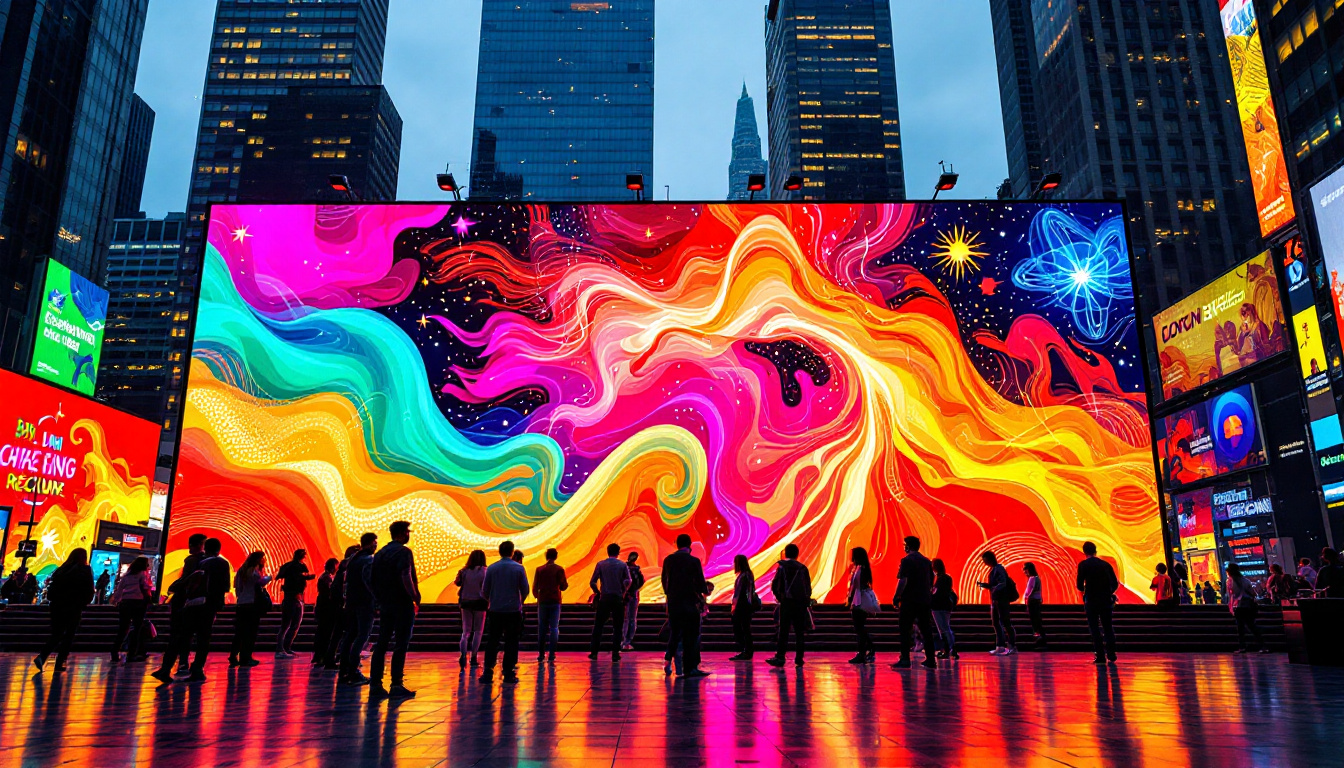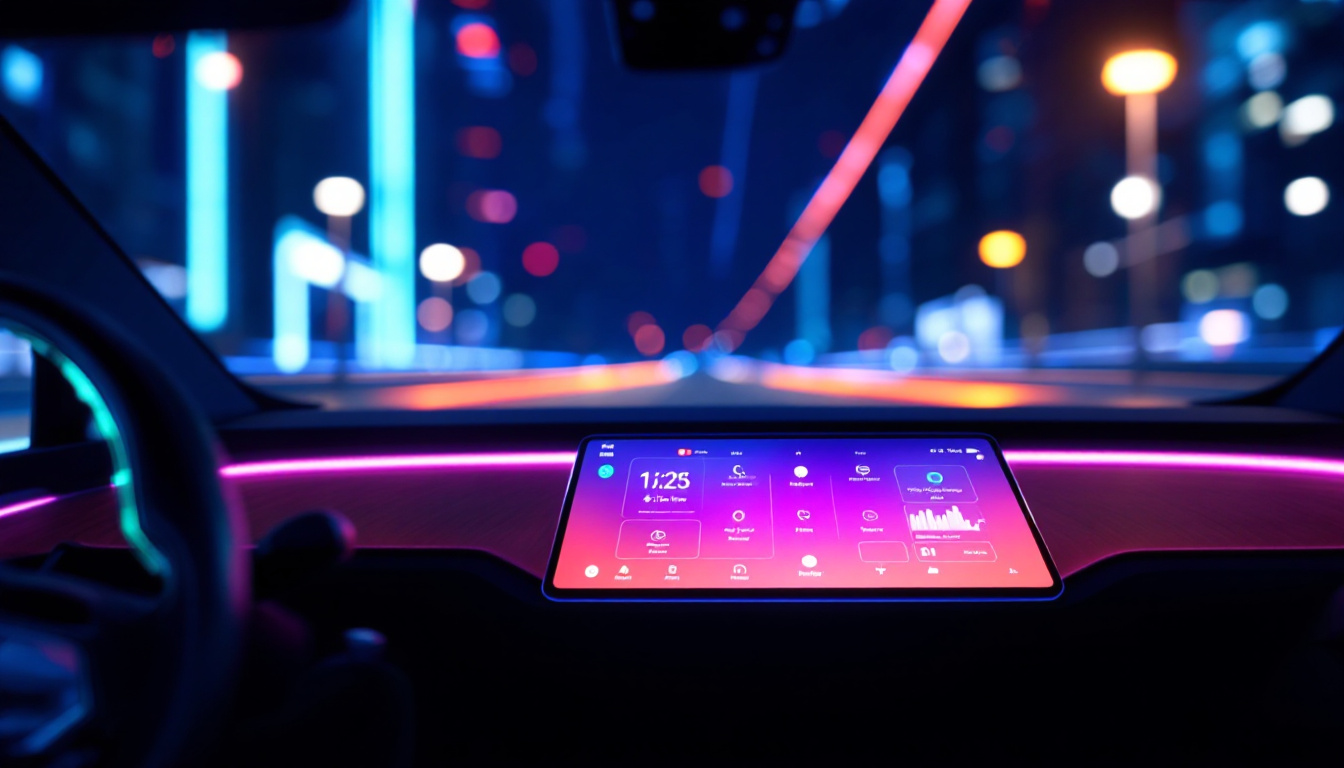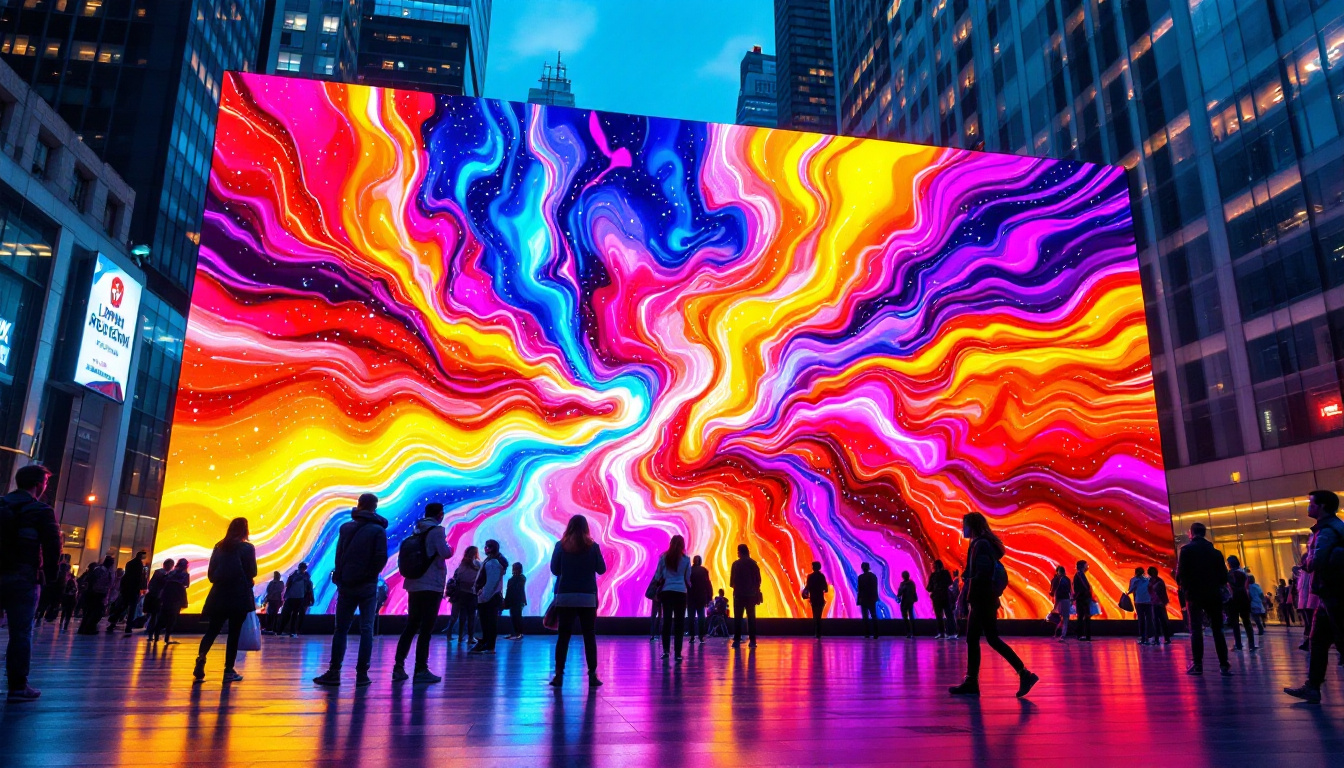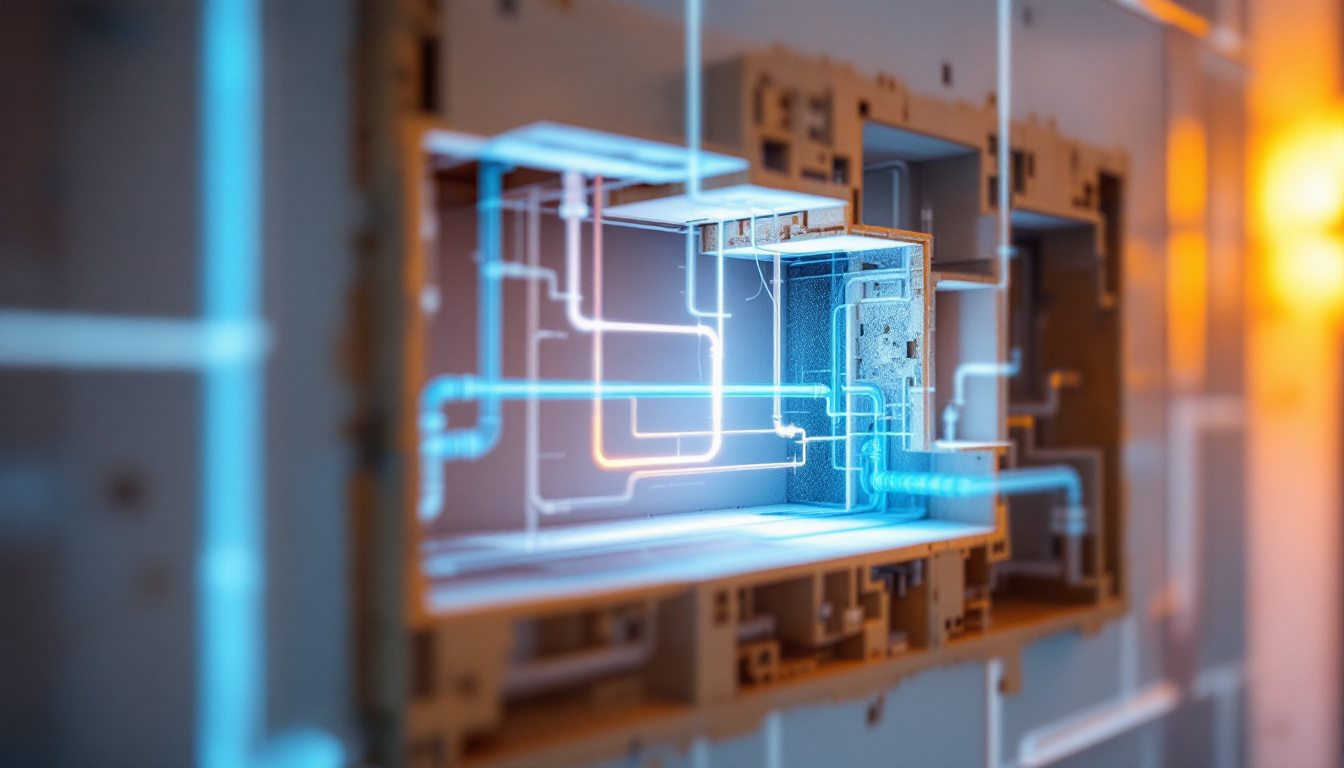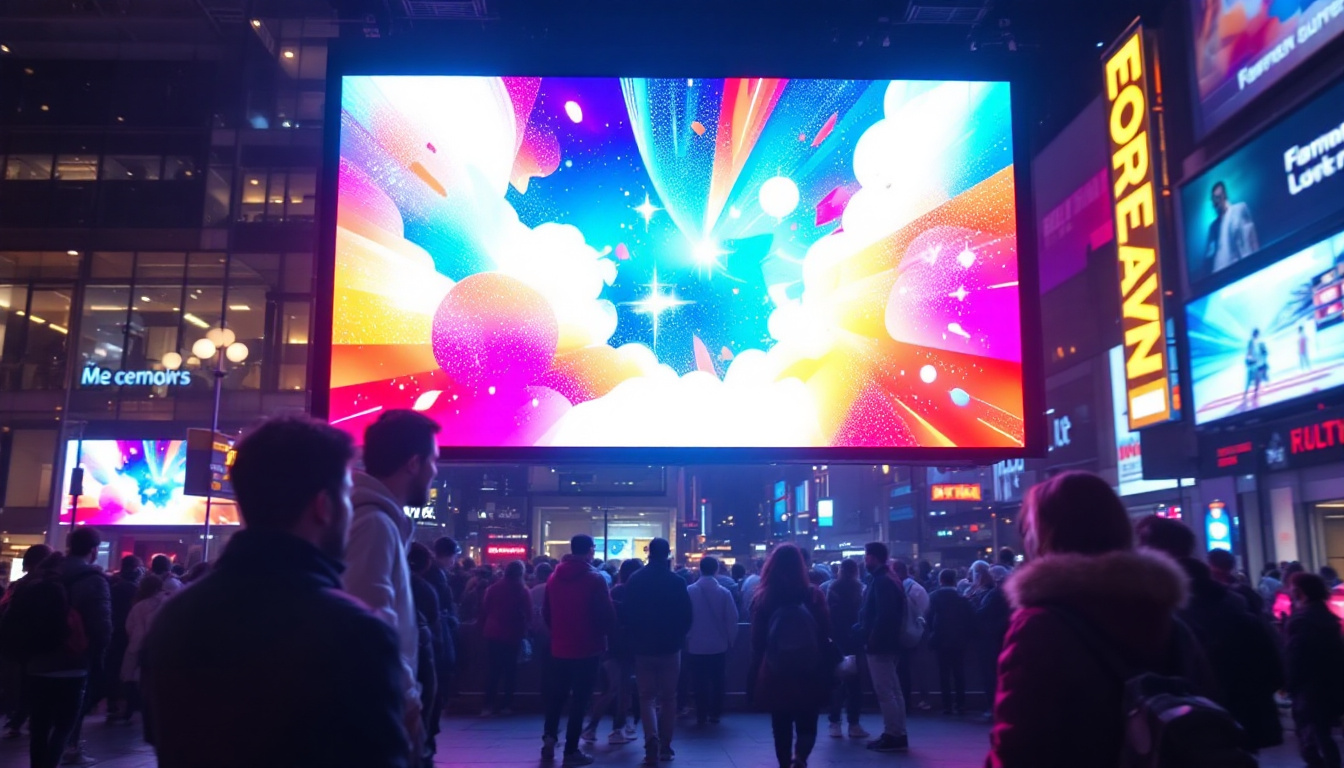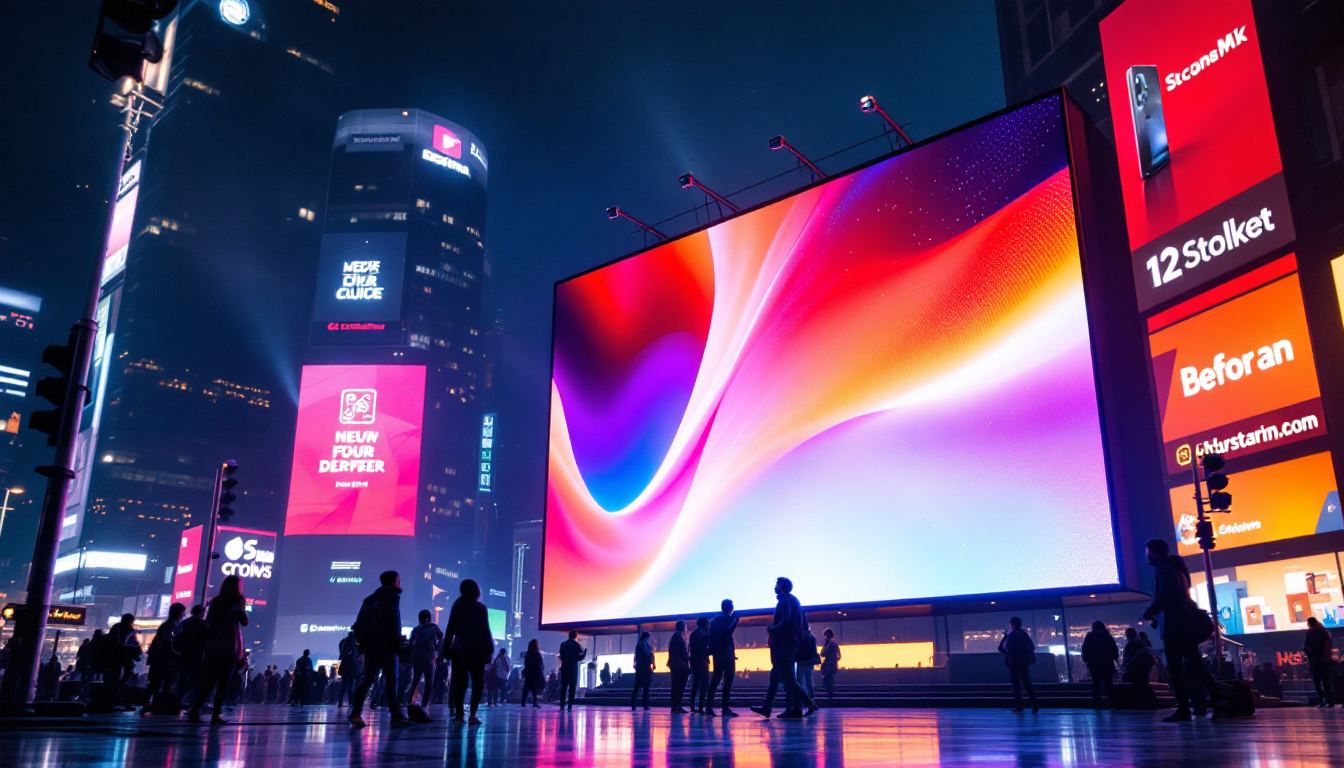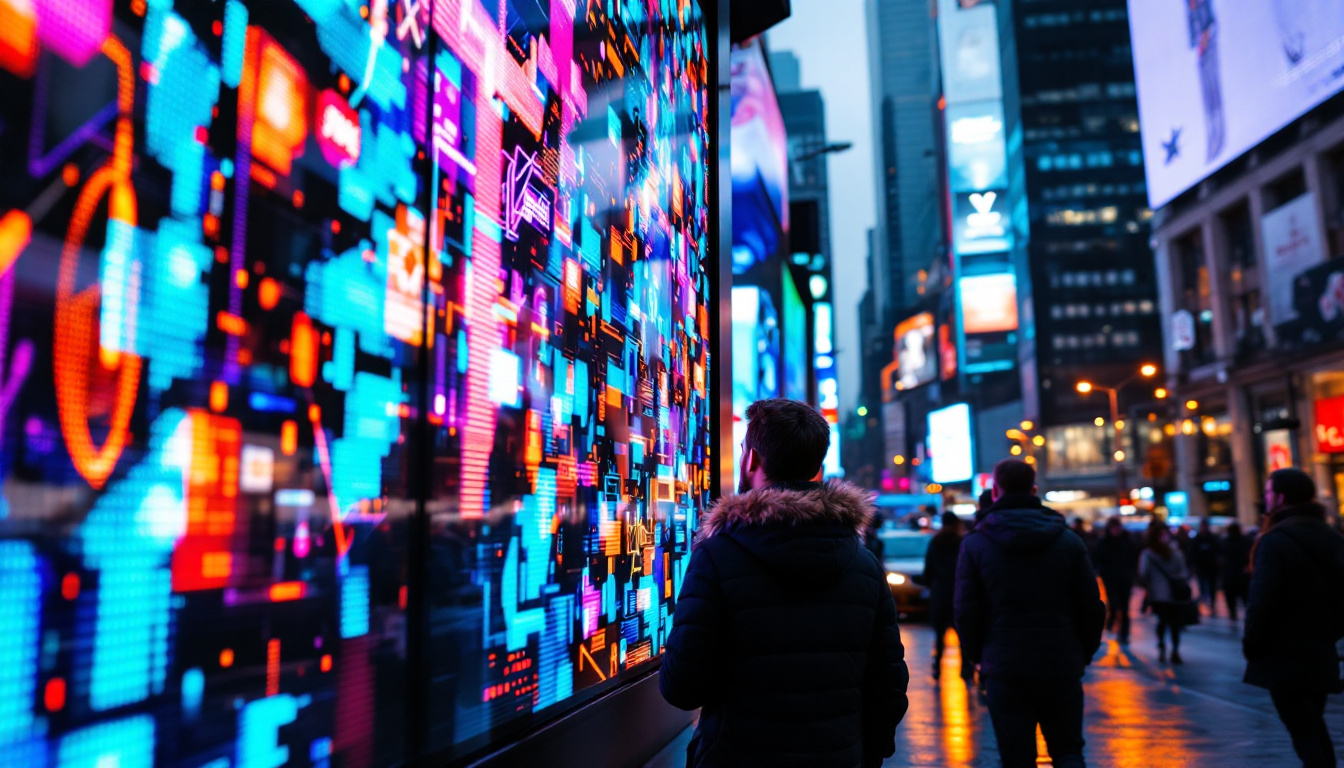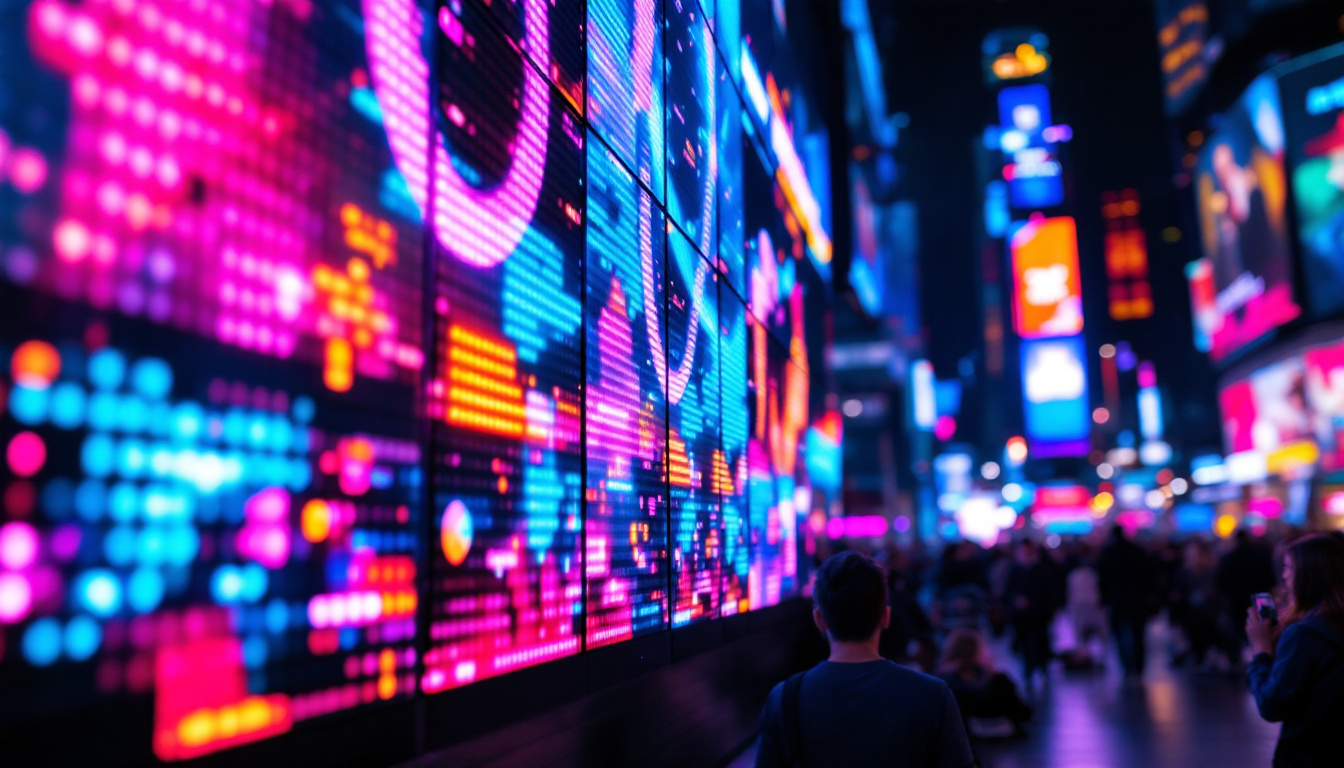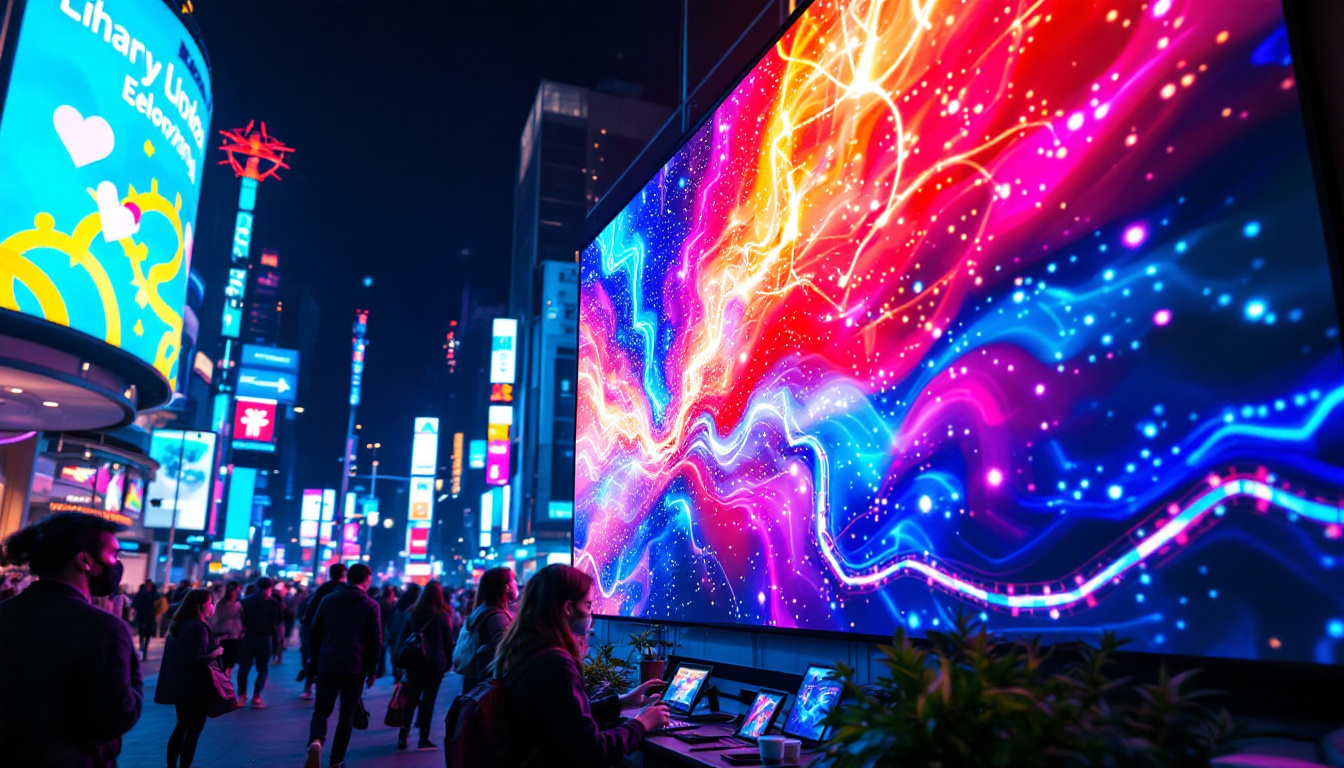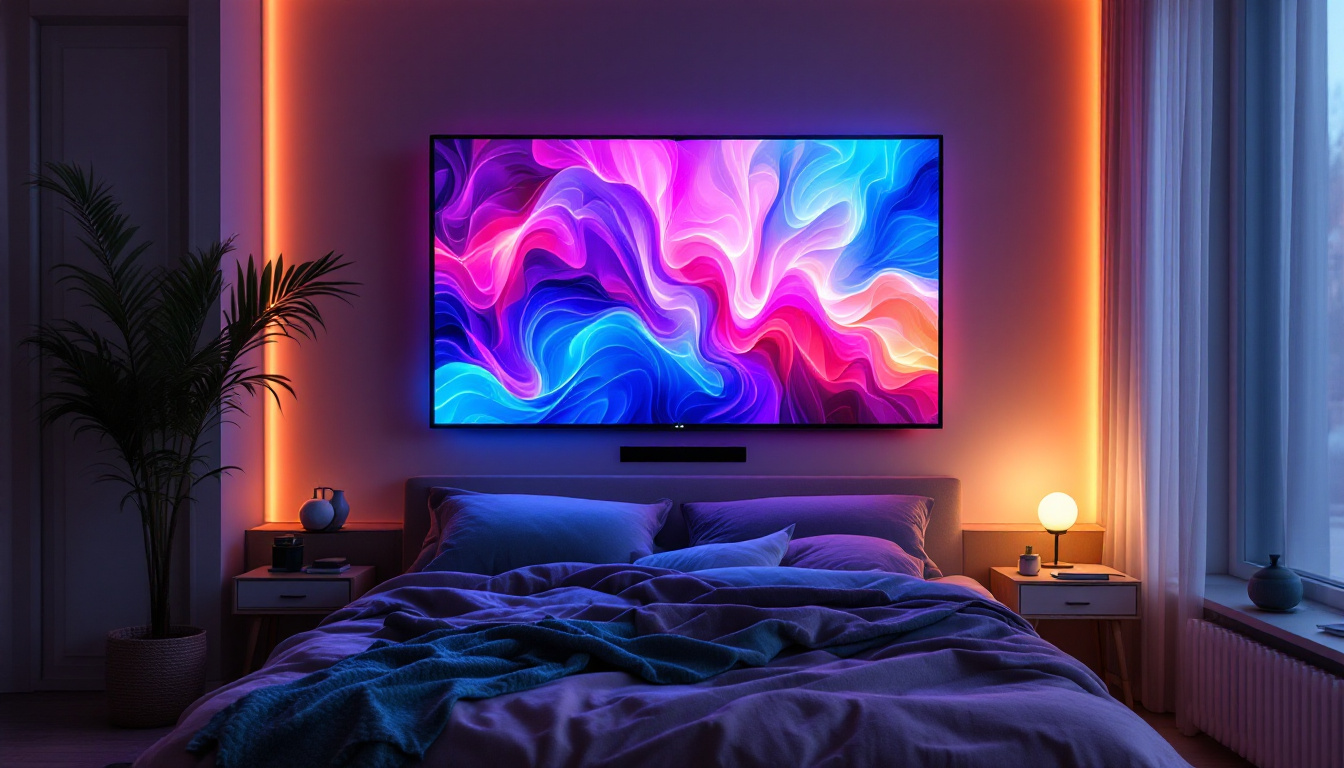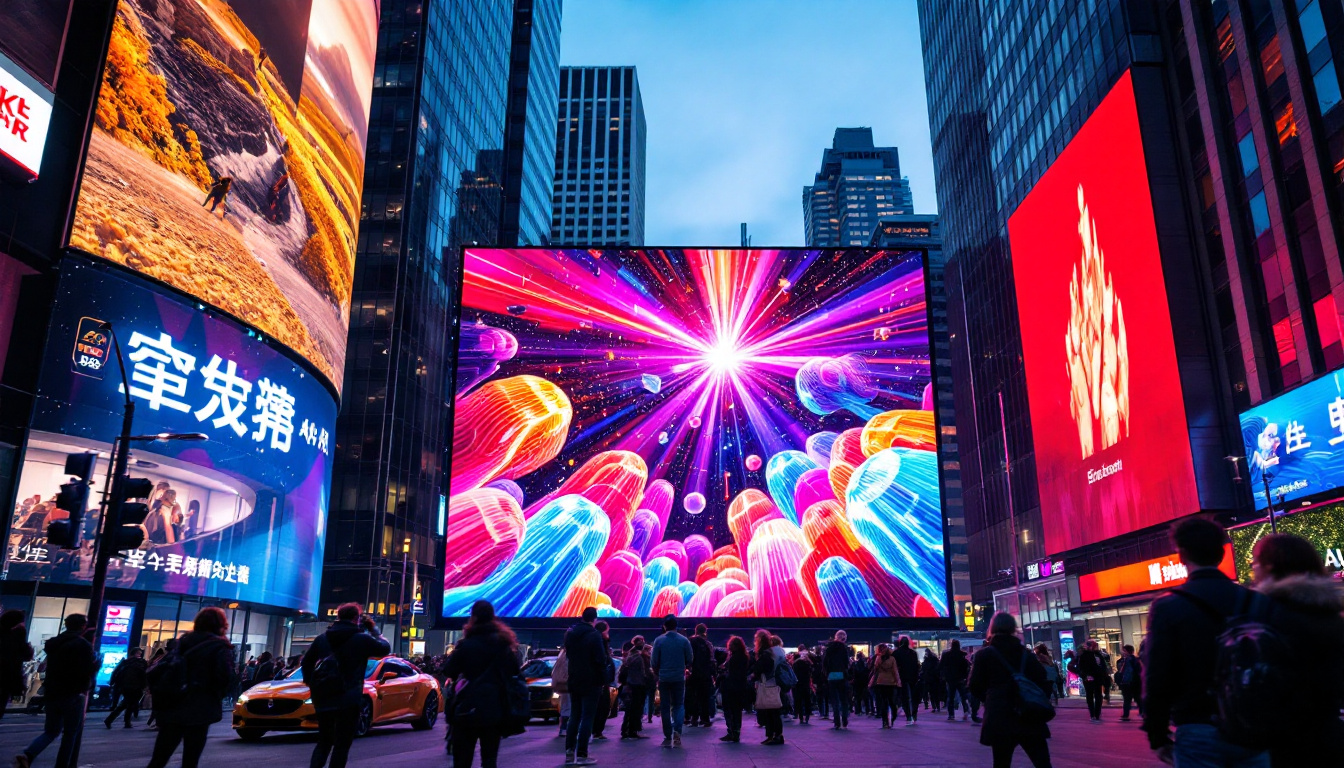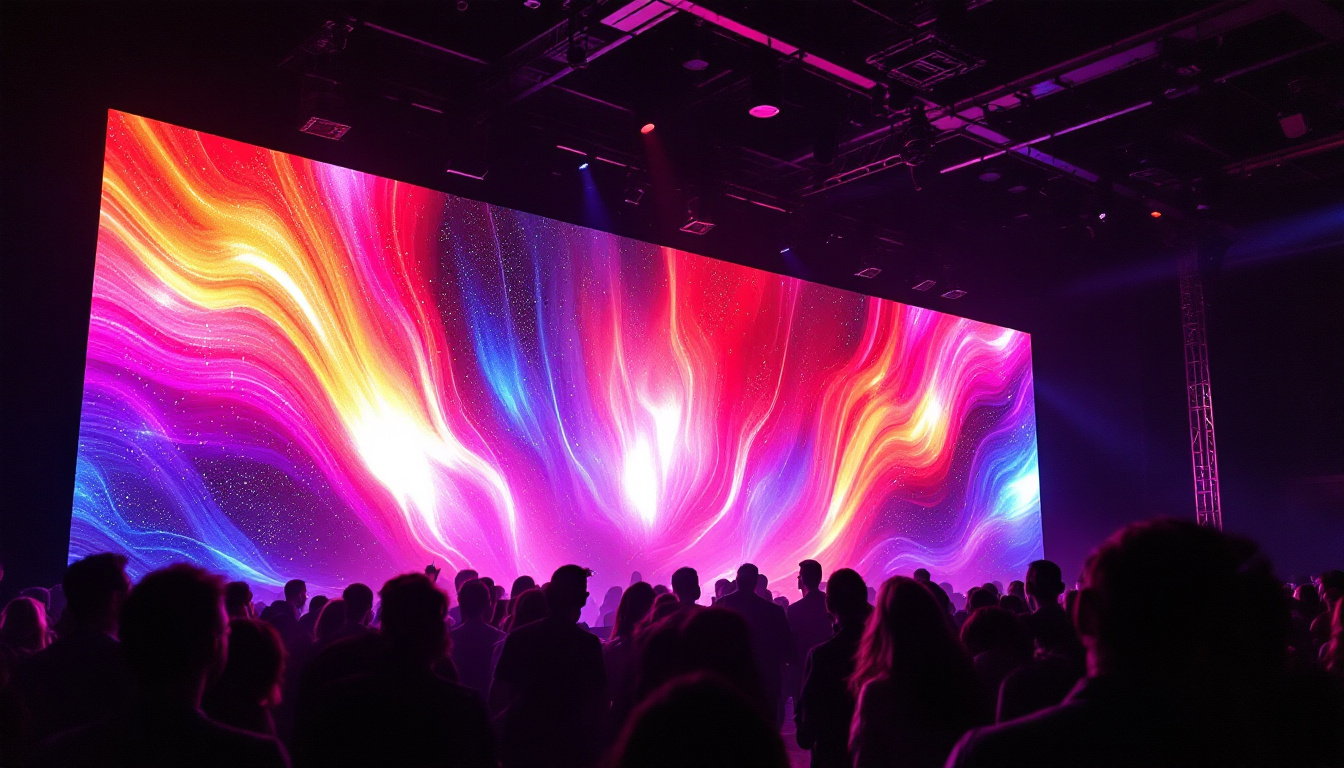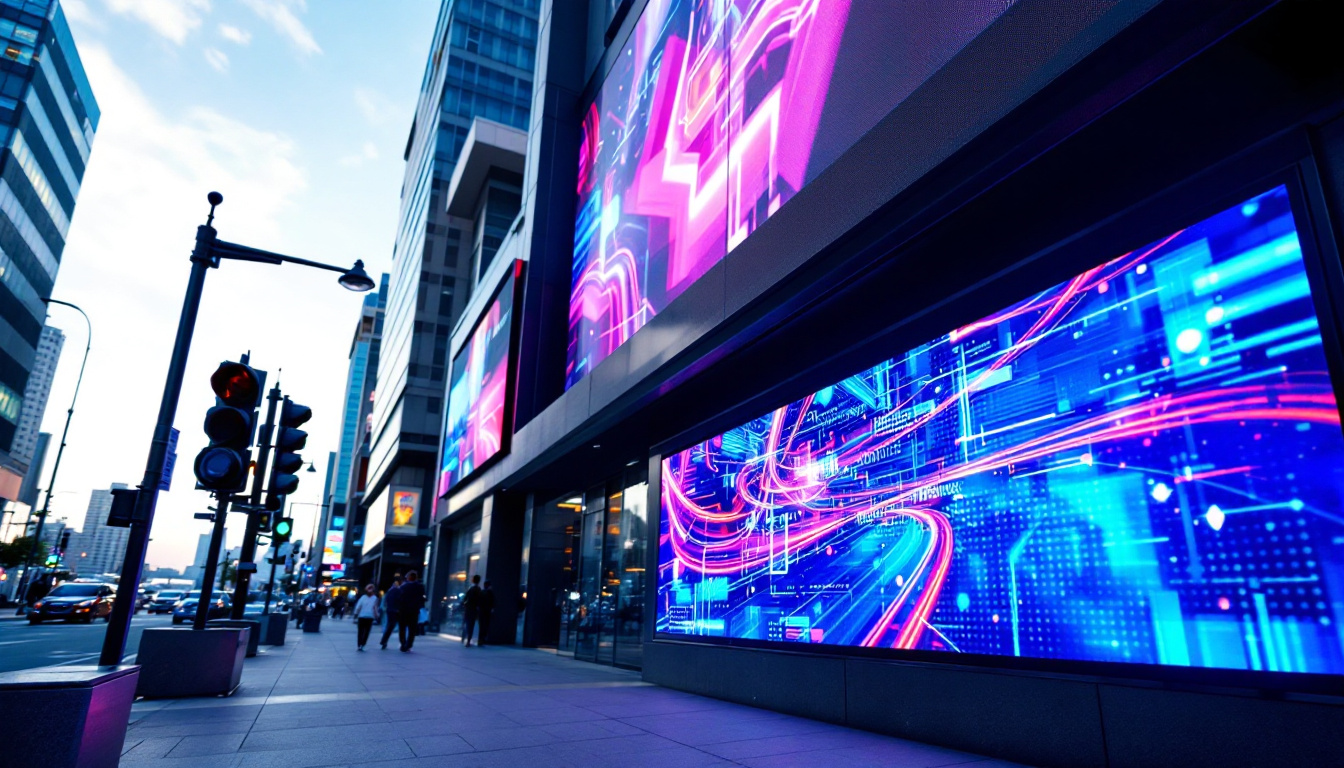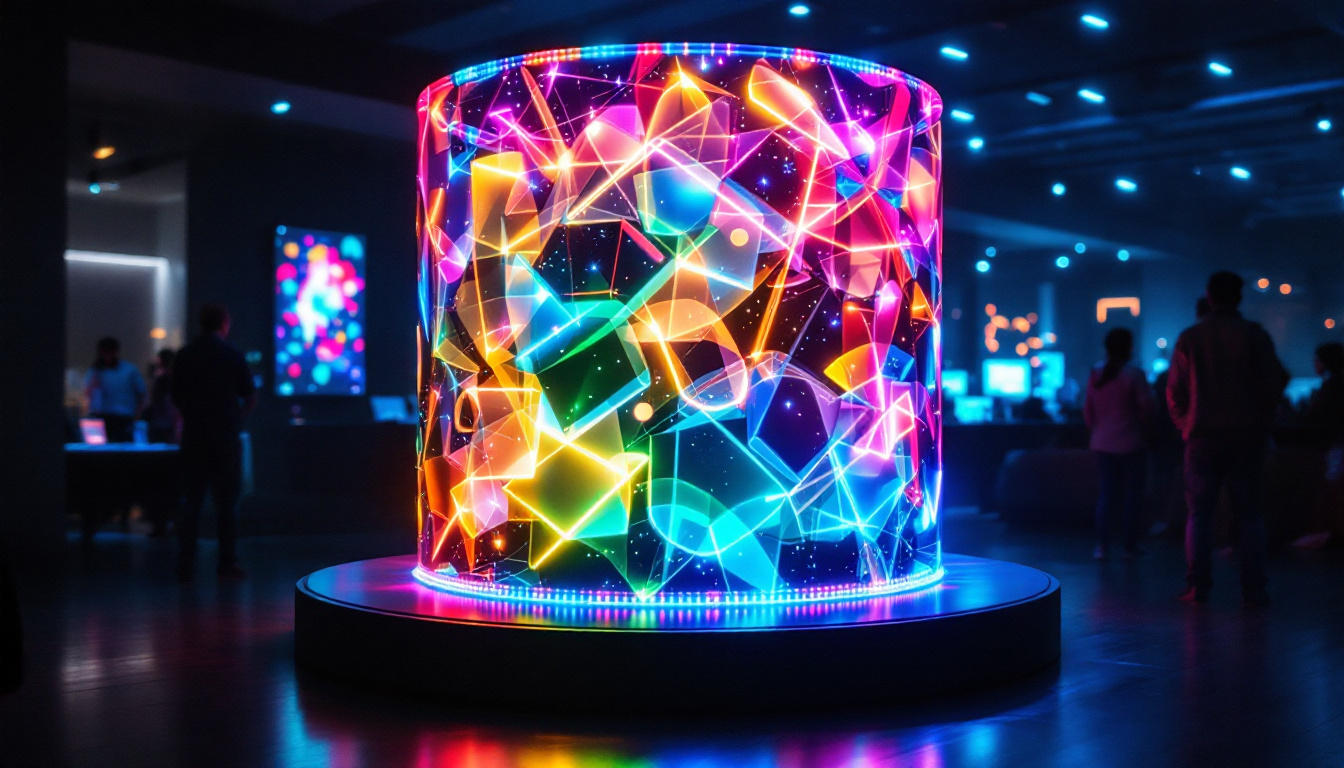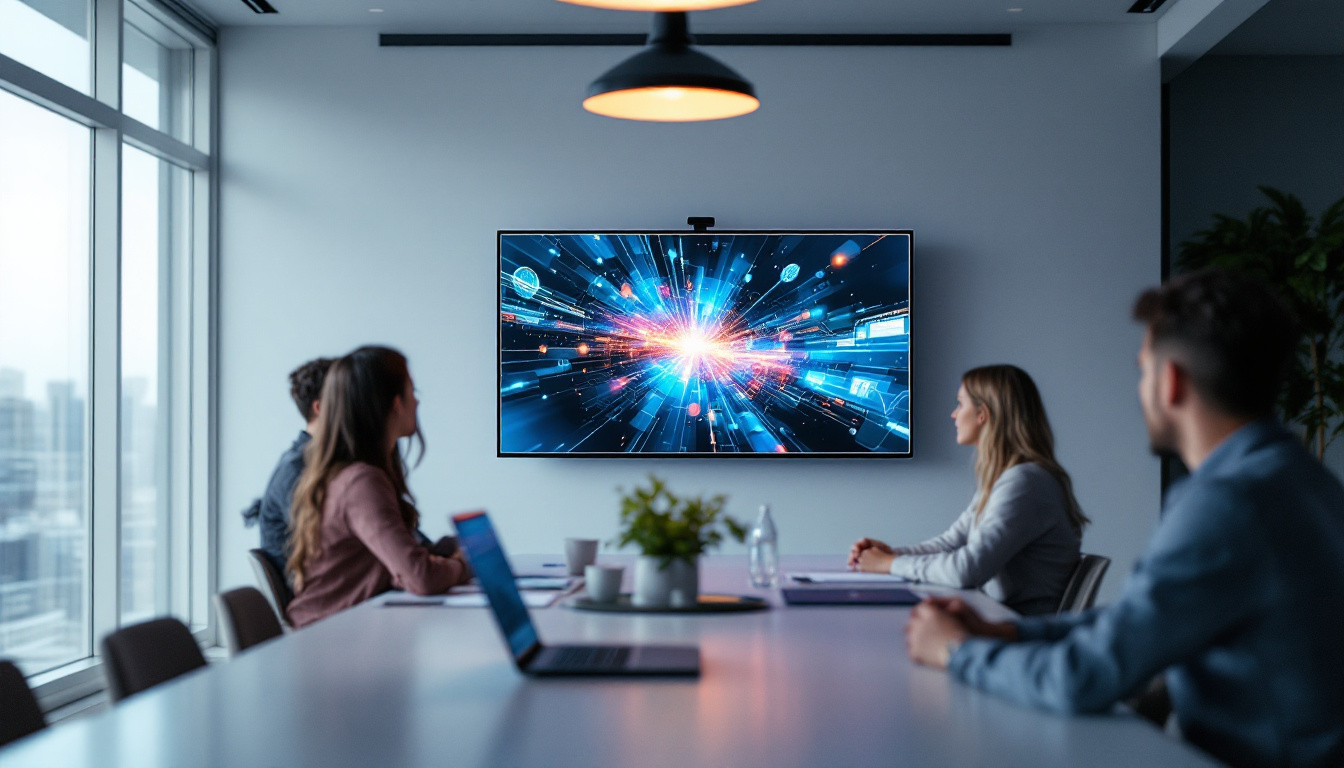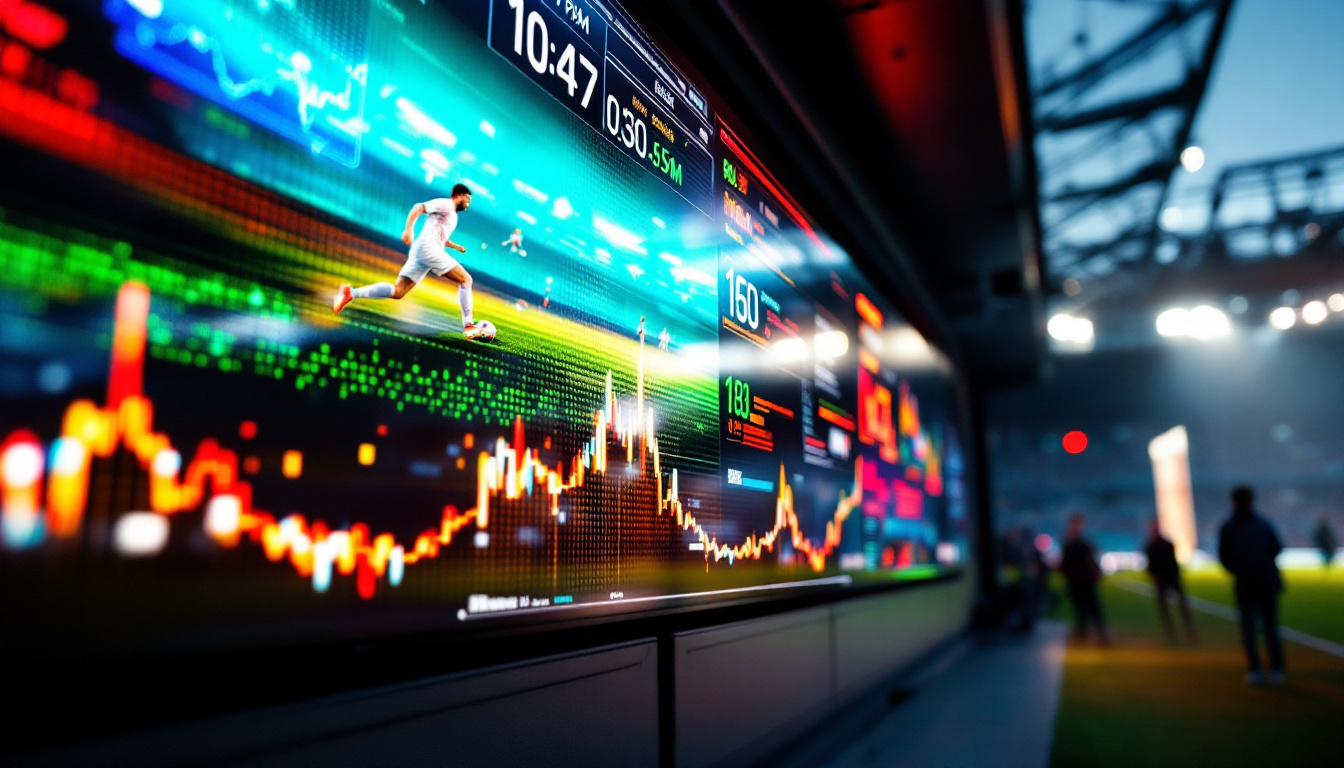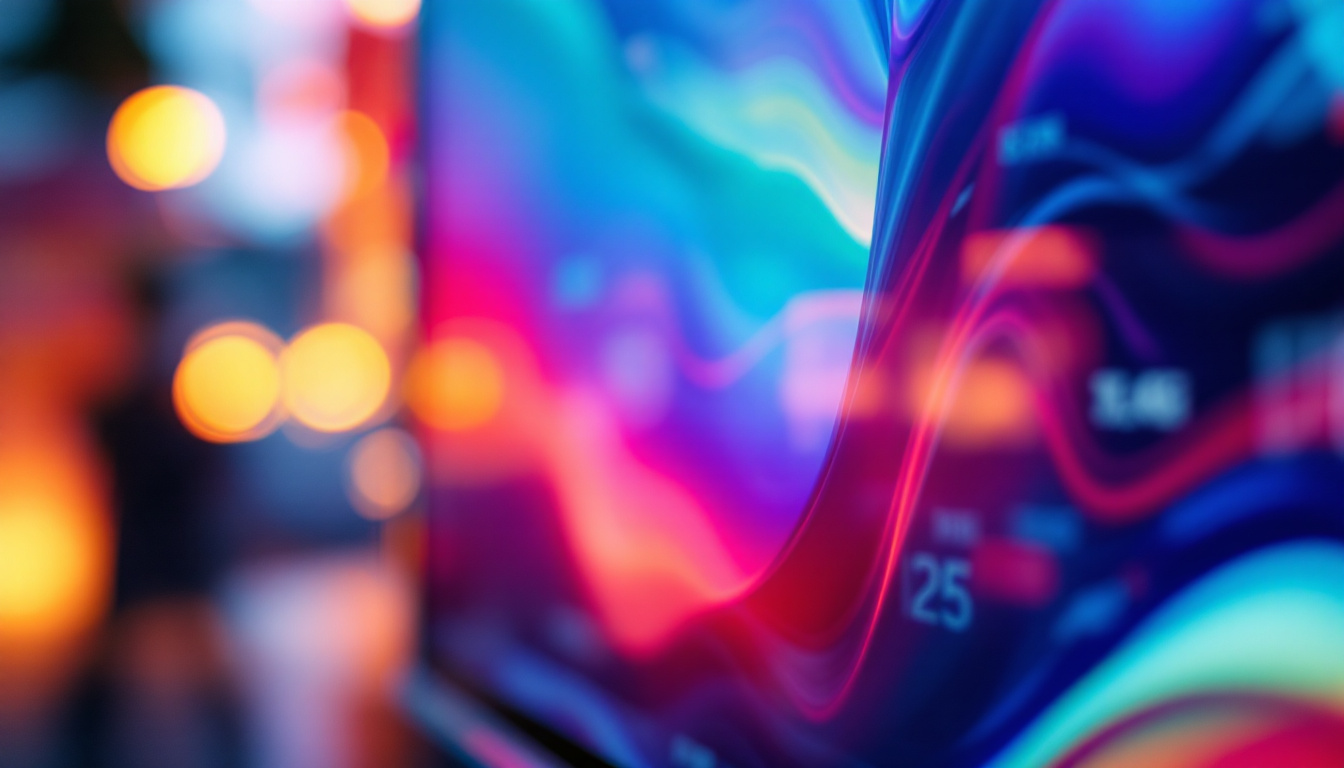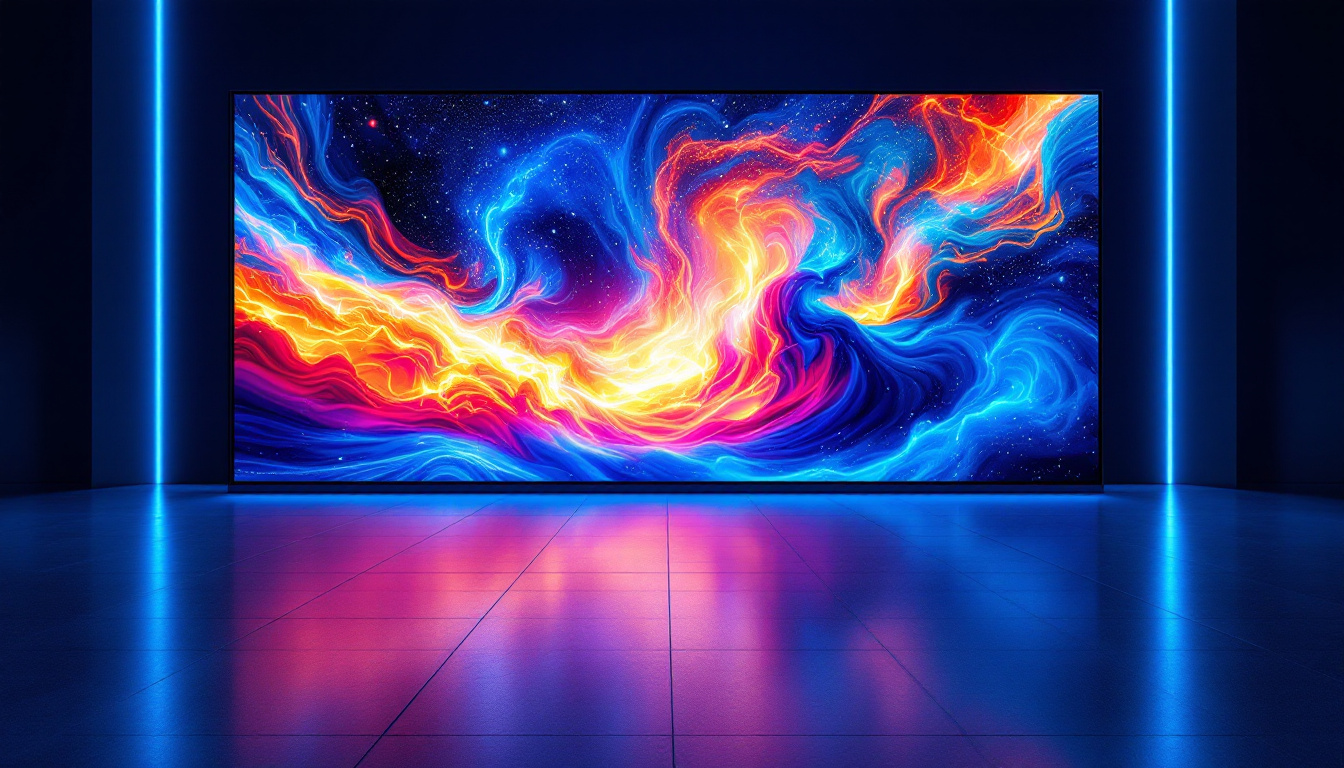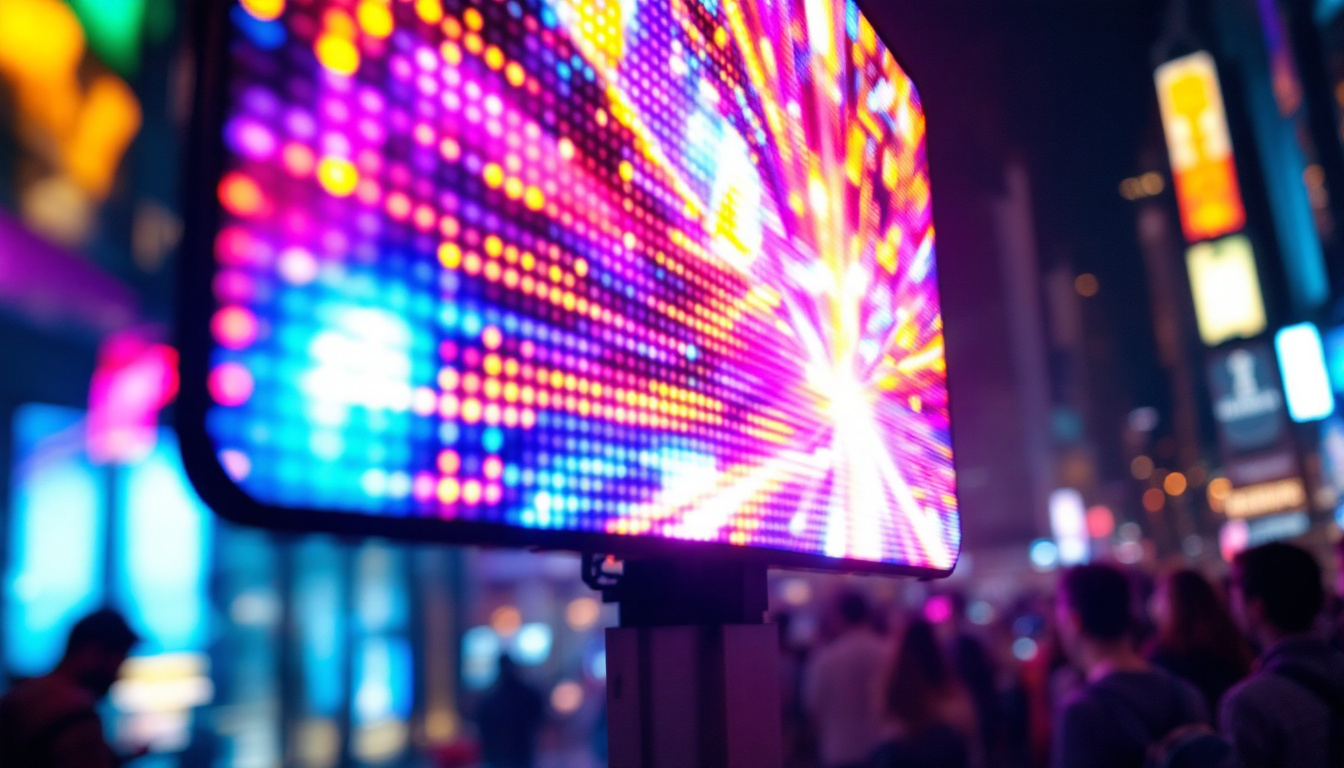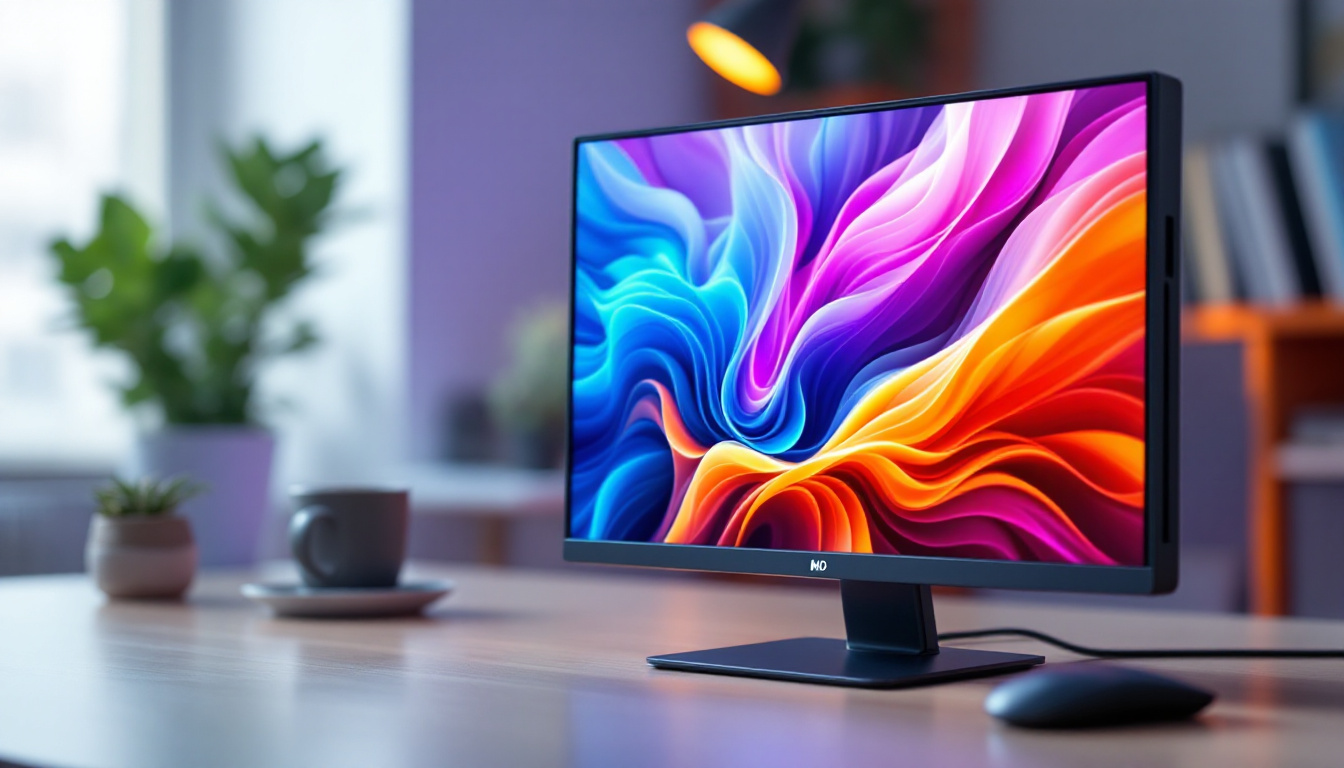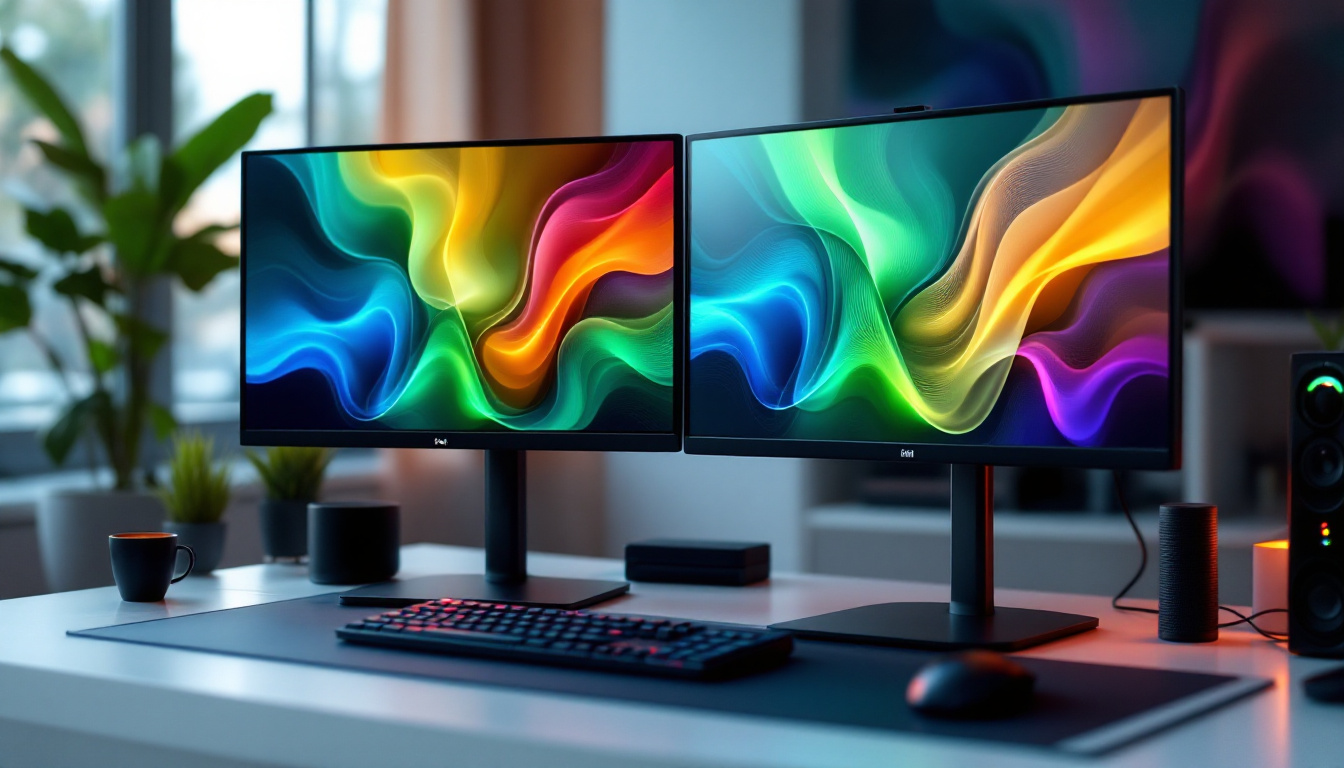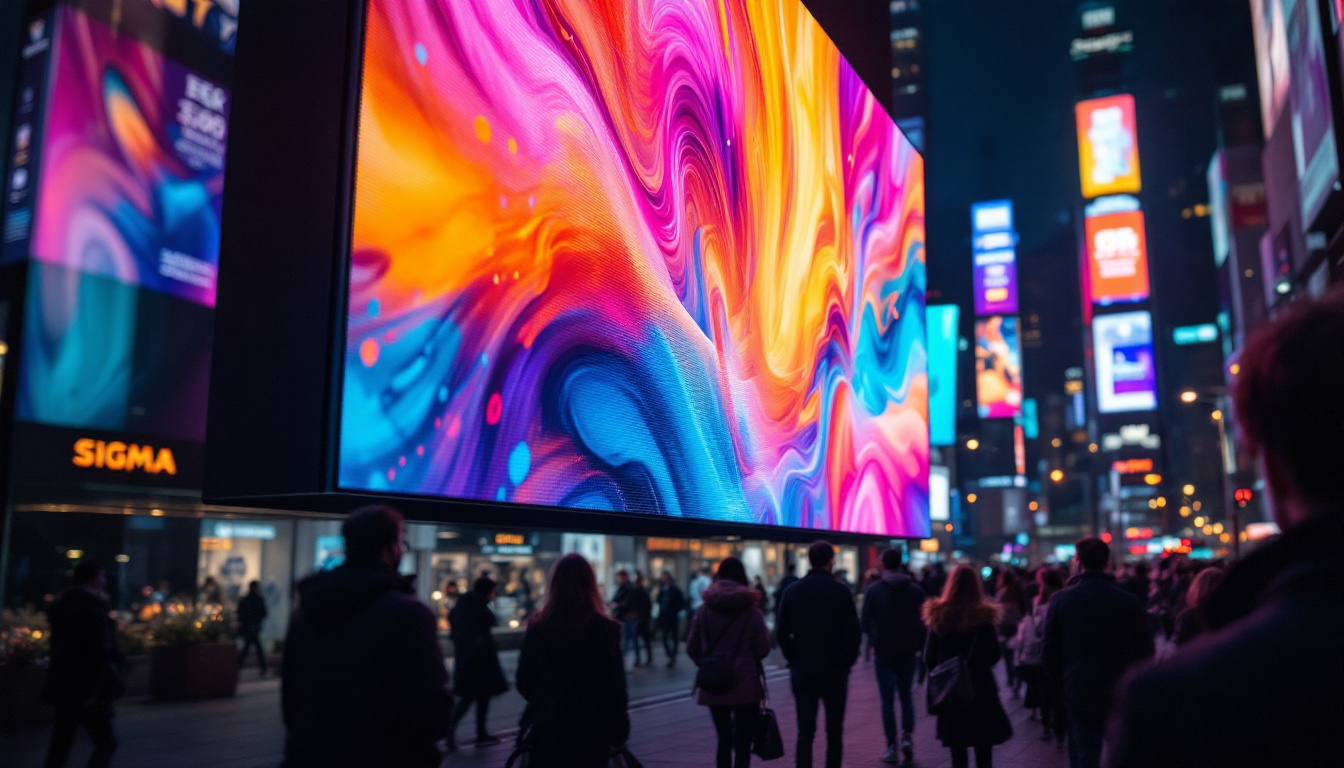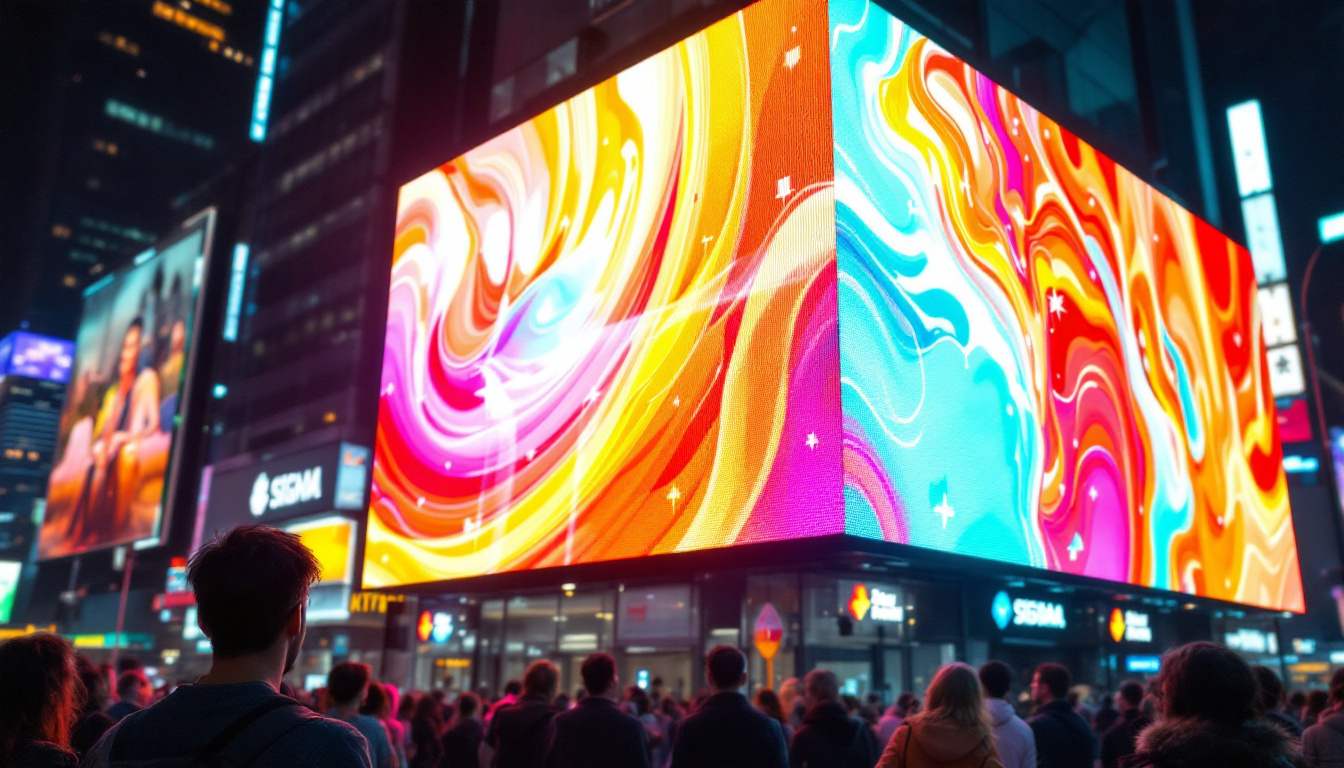In recent years, LED displays have gained immense popularity across various sectors, from advertising to entertainment, and even in industrial applications. China has emerged as a global leader in the production and innovation of LED display technology. This article delves into the intricacies of LED displays, their applications, and the reasons behind China’s dominance in this field.
Understanding LED Displays
LED stands for Light Emitting Diode, a semiconductor device that emits light when an electric current passes through it. LED displays utilize this technology to create vibrant and dynamic visual content. They are composed of numerous individual LED units that can be controlled to produce an array of colors and brightness levels. The efficiency of LED technology not only enhances visual appeal but also contributes to energy savings, making them an environmentally friendly choice for both commercial and residential use.
How LED Displays Work
At the core of LED display technology is the concept of pixels. Each pixel consists of red, green, and blue (RGB) diodes that combine to create a full spectrum of colors. When these diodes are lit in various combinations, they can produce images, videos, and text with remarkable clarity and brightness. The precision with which these diodes can be controlled allows for stunning visual effects, such as gradients and animations that capture the viewer’s attention.
The control system of an LED display plays a crucial role in how effectively the content is presented. Advanced software allows for real-time updates and adjustments, enabling seamless transitions and animations. This flexibility makes LED displays suitable for a wide range of applications, from static advertisements to live event broadcasting. Additionally, many modern LED displays support interactive features, allowing users to engage with the content through touch or motion sensors, further enhancing the viewer experience.
Types of LED Displays
LED displays can be categorized into several types based on their application and design. The most common types include:
- Indoor LED Displays: These are designed for use in enclosed spaces, offering high resolution and brightness suitable for close viewing. They are often used in retail environments, conference rooms, and theaters, where detailed visuals are paramount.
- Outdoor LED Displays: Built to withstand various weather conditions, outdoor displays are typically larger and brighter to ensure visibility in direct sunlight. These displays are commonly found in stadiums, billboards, and public transportation hubs, where they can reach a wide audience.
- Transparent LED Displays: These innovative displays allow light to pass through, making them ideal for storefronts and exhibitions where visibility is essential. They create a unique blend of digital content and physical space, allowing businesses to showcase products while still maintaining an open and inviting atmosphere.
Another emerging type of LED display is the flexible LED screen, which can be bent or shaped to fit unconventional surfaces. This adaptability opens up new possibilities for creative installations in architecture and art. Furthermore, advancements in micro-LED technology are paving the way for even smaller and more efficient displays, which promise to deliver higher resolutions and improved color accuracy. As the technology continues to evolve, we can expect to see even more innovative applications of LED displays across various industries.
The Rise of LED Display Manufacturing in China
China’s ascent in the LED display market can be attributed to several factors, including technological advancements, cost-effective manufacturing, and a robust supply chain. The country has become a manufacturing hub for LED technology, producing a significant portion of the world’s LED displays.
Technological Advancements
Chinese manufacturers have invested heavily in research and development, leading to significant advancements in LED technology. Innovations such as improved energy efficiency, higher resolution displays, and enhanced color accuracy have positioned China at the forefront of the industry.
Moreover, the rapid pace of technological evolution means that Chinese companies can quickly adapt to changing market demands, ensuring they remain competitive on a global scale. This agility is crucial in an industry characterized by fast-changing trends and consumer preferences. For instance, the integration of smart technology into LED displays has allowed for features such as remote control, interactive capabilities, and connectivity with other devices, making these displays not only visually appealing but also functionally versatile.
Cost-Effective Manufacturing
One of the key advantages of LED display manufacturing in China is the ability to produce high-quality products at a lower cost. Factors such as lower labor costs, access to raw materials, and economies of scale contribute to this competitive pricing.
This cost-effectiveness allows Chinese manufacturers to offer a wide range of LED display products, catering to various budgets and requirements. As a result, businesses around the world can access advanced display technology without breaking the bank. Additionally, the Chinese government’s support for the technology sector, including subsidies and incentives for manufacturers, further enhances the industry’s growth potential. This support not only bolsters production capabilities but also encourages innovation, as companies are motivated to develop new products that can capture both domestic and international markets.
Applications of LED Displays
LED displays have found applications across numerous sectors, each benefiting from the unique features of this technology. From advertising to sports, the versatility of LED displays is evident in their widespread use.
Advertising and Marketing
One of the most prominent applications of LED displays is in advertising. Billboards, storefronts, and public spaces utilize LED technology to capture attention with vibrant visuals and dynamic content. The ability to change advertisements in real-time allows businesses to tailor their messaging based on audience engagement and time of day.
Furthermore, LED displays can be synchronized to create immersive experiences, such as those seen at concerts or sporting events. This capability enhances brand visibility and engagement, making LED displays a powerful tool for marketers.
Entertainment and Events
In the entertainment industry, LED displays are indispensable. They are used in concerts, festivals, and theatrical performances to deliver stunning visuals that enhance the overall experience. The flexibility of LED technology allows for creative staging and dynamic content that can adapt to various themes and performances.
Moreover, sports arenas utilize large LED screens to display live game footage, replays, and advertisements, creating an engaging atmosphere for fans. The ability to present high-definition content in real-time is crucial for enhancing the spectator experience.
Corporate and Educational Use
LED displays are increasingly being adopted in corporate environments for presentations, meetings, and training sessions. Their high visibility and clarity ensure that information is communicated effectively, regardless of the audience size.
In educational institutions, LED displays serve as powerful teaching tools. They can be used to present interactive lessons, videos, and other multimedia content that enhances learning and engagement among students.
Challenges Facing the LED Display Industry
Despite the numerous advantages of LED displays, the industry is not without its challenges. As competition intensifies, manufacturers must navigate various hurdles to maintain their market position.
Market Saturation
With the rapid growth of the LED display market, saturation has become a significant concern. As more companies enter the market, distinguishing oneself becomes increasingly difficult. Manufacturers must focus on innovation and quality to stand out in a crowded marketplace.
Additionally, the influx of low-cost products can lead to price wars, which may compromise quality and sustainability. Companies must strike a balance between competitive pricing and maintaining high standards in their products.
Environmental Concerns
The production and disposal of LED displays raise environmental concerns. While LED technology is generally more energy-efficient than traditional display technologies, the manufacturing process can result in waste and pollution.
Moreover, the disposal of outdated or broken LED displays poses a challenge, as they contain materials that can be harmful to the environment. Manufacturers are increasingly being called upon to adopt sustainable practices, including recycling programs and the use of eco-friendly materials.
The Future of LED Displays
The future of LED displays looks promising, with ongoing advancements in technology and increasing demand across various sectors. As the industry evolves, several trends are expected to shape its trajectory.
Integration with Smart Technology
As the world becomes more interconnected, the integration of LED displays with smart technology is on the rise. This includes the use of Internet of Things (IoT) devices that allow for remote monitoring and control of displays.
Smart LED displays can adapt to environmental conditions, such as adjusting brightness based on ambient light, thereby enhancing energy efficiency. This integration not only improves functionality but also provides valuable data for businesses to optimize their advertising strategies.
Advancements in Display Technology
Future advancements in display technology are likely to lead to even more innovative LED solutions. Developments such as microLED and OLED technologies promise higher resolutions, better color accuracy, and improved energy efficiency.
These innovations will open up new possibilities for applications, including flexible displays that can be shaped to fit various environments and needs. As technology continues to evolve, the potential for LED displays will expand, creating exciting opportunities for businesses and consumers alike.
Conclusion
LED displays have transformed the way information is presented and consumed across various sectors. China’s leadership in the manufacturing and innovation of LED technology has positioned it as a key player in the global market. As the industry continues to evolve, the applications of LED displays will expand, offering new opportunities for engagement and interaction.
While challenges such as market saturation and environmental concerns persist, the future of LED displays remains bright. With ongoing advancements in technology and the integration of smart features, LED displays are set to play an even more significant role in our daily lives.
In summary, understanding LED displays and their applications is crucial for businesses and consumers alike. As technology continues to advance, staying informed about the latest trends and developments will be essential for leveraging the full potential of LED displays.
Discover LumenMatrix’s Innovative LED Display Solutions
As you’ve seen, LED displays are pivotal in shaping the future of visual communication. Embrace the forefront of this technology with LumenMatrix, a pioneer in crafting LED display modules that redefine brand presence and audience engagement. Whether you need an Indoor LED Wall Display for your corporate headquarters, an Outdoor LED Wall Display for impactful advertising, or any of our specialized solutions like Vehicle, Sports, or Floor LED Displays, LumenMatrix tailors to your unique requirements. Our mission is to transform your visual storytelling with displays that command attention and deliver your message with unparalleled vibrancy. Check out LumenMatrix LED Display Solutions and join the revolution in digital signage excellence.

